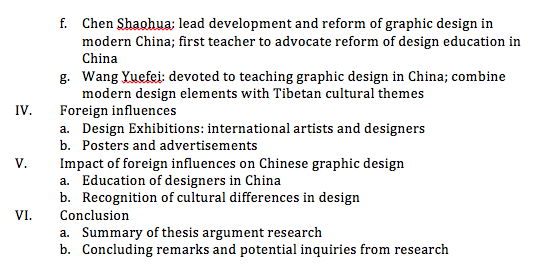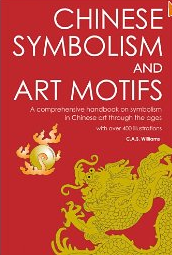Continued researching a variety of cross-cultural graphic designers in China. For my research paper, I’m analyzing the design works of pioneer Chinese designer Bingnan Yu, ‘Father of Hong Kong’ design Henry Steiner, and Xu Wang–a well-known graphic designer whose works show influences from the East and West. Working bibliography:
Anderson, Chris. “Wang Xu: graphic design’s evangelist in China.” Graphis 316 (1998): 22-31.
Arntson, Amy E. Graphic Design Basics, Third Edition. Orlando: Harcourt Brace College Publishers, 1998.
Cushing, Lincoln. “Revolutionary Chinese Posters and Their Impact Abroad,” 7-23.
Cushing, Lincoln, and Ann Tompkins. Chinese posters: Art from the great proletarian cultural revolution. San Francisco: Chronicle Books LLC, 2007.
Hongxing, Zhang and Lauren Parker, eds. China Design Now. South Kensington: V&A Publishing, 2008.
Lupton, Ellen. Thinking with type: a critical guide for designers, writers, editors, & students (second, revised and expanded edition). New York: Princeton Architectural Press, 2010.
Meggs, Philip B. and Alston W. Purvis. Meggs’ History of Graphic Design, 4th edition. Hoboken[city]: John Wiley & Sons, Inc., 2005.
Meggs, Philip B. and Alston W. Purvis. Meggs’ History of Graphic Design, 5th edition. Hoboken[city]: John Wiley & Sons, Inc., 2011.
Minick, Scott, and Jiao Ping. Chinese Graphic Design in the Twentieth Century. New York: Van Nostrand Reinhold, 1990.
Page One Publishing. Inspirations from the East: Modern Chinese Design. Page One Publishing Private, 2010.
Resnick, Elizabeth. Design for communication: conceptual graphic design basics. New Jersey: John Wiley & Sons, 2003.
Steiner, Henry, and Ken Haas. Cross-Cultural Design: Communicating in the Global Marketplace. New York: Thames and Hudson Inc., 1995.
Wang, Min, and Xiao Hong Shen. “After Mao: Chinese Graphic Design Today,” Print 48 (1994): 64-71.
Welch, Patricia Bjaaland. Chinese art: a guide to motifs and visual imagery. Tokyo: Tuttle Publishing, 2008.
Henry Steiner & Co. Branding
Other resources of interest:
Losing In Translation 2: Graphic Design in Hong Kong and the Peoples Republic of China, by Catherine Jo Ishino
More on Professor Yu Bingnan, Design China
Posters by Xu Wang, The International Poster Collection, Colorado State University
Biography on Xu Wang on Beijing International Design Triennial
Surface Asia Magazine
Bauhaus: Ninety Years of Inspiration by Sharon Ross on smashingmagazine.com
More resources to update as the research paper progresses.











